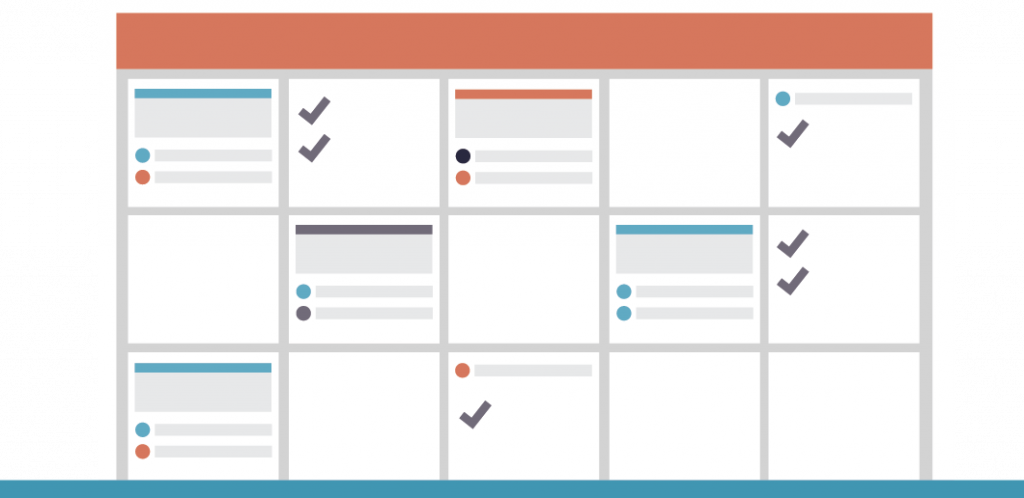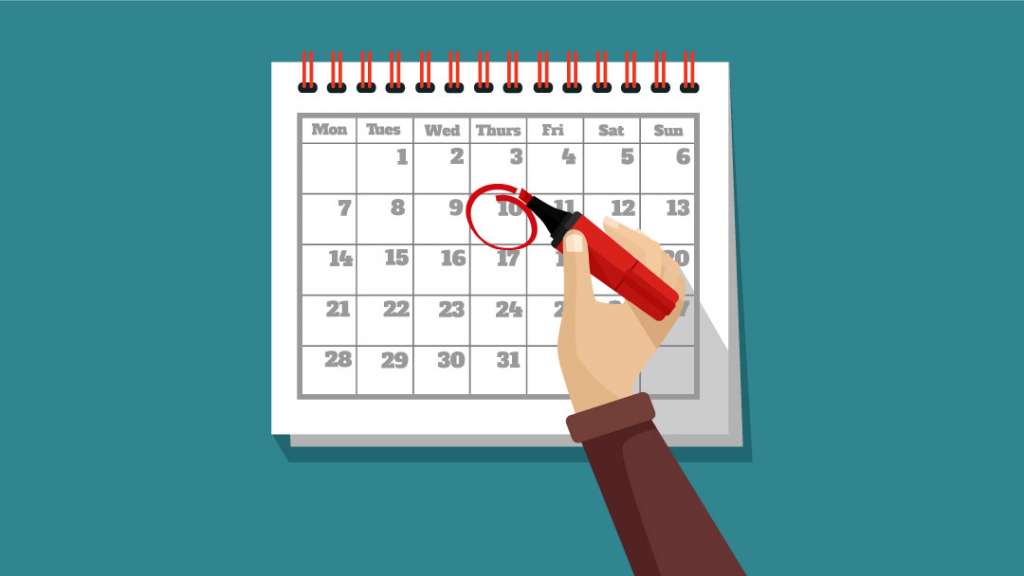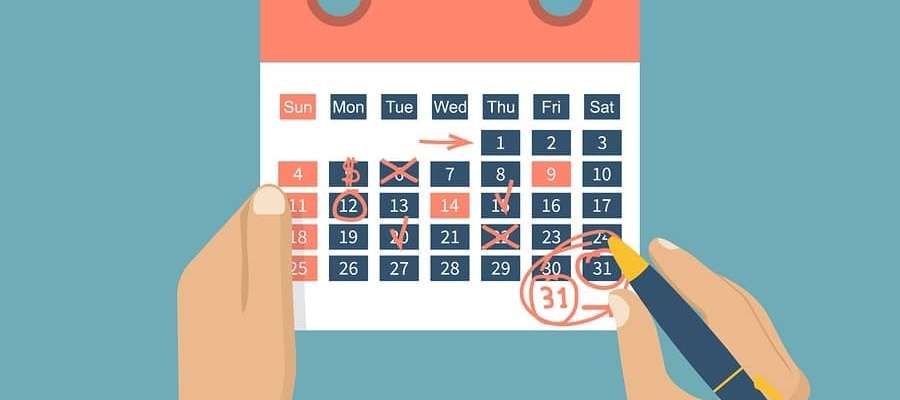Why You Need a blog Content Calendar and How to Create One
How do you keep up with your blog content publishing schedule? Do you have an editorial calendar or schedule that helps you track what and when you need to publish?
A blog editorial calendar or schedule can play a critical role in the success of your content publishing and marketing strategy.
Why?
In short: It helps you centralize all your posts in one place and that saves you the panic of having to write something at the last minute.
Quite frankly, the reason you don’t post web content on your blog and other platforms consistently is most likely the lack of a blog content writing and scheduling plan –Or a blog editorial calendar, so to speak.
In this article, we will be discussing the importance of a content editorial calendar for your blog, social medial, and other platforms, and how to come up with one.
What Is Blog Content Editorial Calendar?

An editorial calendar is an essential tool that will guide your entire publishing strategy and save you precious time.
It allows you to efficiently manage all the content that needs to be created and published on your blog and other platforms, by planning for it in advance.
As a result, you will have a long-term vision which is a real asset to keep consistency in your editorial line and more easily reach your goals.
Benefits of Having a Blog Content Publishing Calendar
The content market on blogs, social networks, and other platforms is increasingly saturated, so it is all the more complicated for brands to differentiate themselves.
This is when the editorial calendar comes into play. If it is well done, and closely observed, it can revolutionize the performance of your publications across different platforms.
Here are some of the benefits of having an editorial calendar or posting schedule for your web content.
Helps you Keep a Regular Publication Frequency
The editorial calendar will allow you to ensure an optimal frequency of publication. One of the criteria that help your community grow is how often you post. A sustained and regular publication rate reassures your subscribers and places them in a trusted environment, making them come back for more consistently.
If you write your blog articles at the last moment, you have no leeway if an event occurs and prevents you from writing.
Of course, if it’s a temporary setback, you can always write the next day … but if it continues, it is sometimes difficult to get back on track afterward.
Having a few articles already written and planned allows you to manage this period with more focus. For a professional, it is also the assurance of not leaving your blog abandoned for too long (which can otherwise hurt your traffic).
Have a Balanced Editorial Line
Planning your posts means having a medium-term or long-term vision of the subjects you’re going to cover. It allows for a more balanced editorial line.
You can more easily alternate the themes, produce content for your different targets (beginners, experts, young, not so young, amateurs, pros…). It is not necessarily as easy when you let yourself be guided by spontaneous inspiration.
Better Time Management
When you plan your articles, you can assess the working time they require: do you need to go and take photos? Do research? Create infographics?
Knowing in advance helps organize, avoiding allocating an article that takes a long time to write at a rather busy time.
It also helps to better anticipate certain events. For example, most people don’t start thinking about Christmas gifts on December 20 –they do it much earlier. And so they will also start looking for ideas even a month in advance.
This means if you want to get your brand or product on top of their minds, you need to start sharing your ideas and message much earlier.
Having a schedule means being able to list these major events of the year in advance and better manage them, presenting just the right kind of content at the right time.
Content Planned Upstream
Have you celebrated Saint Patrick’s Day on your business blog and social networks this year? No? Don’t tell me you forgot about it…
This is why the editorial calendar is so important. It will allow you to never miss the significant events of the year like World Social Network Day, for example.
By planning these major and recurring moments of the year you will be able to create content linked to current events, also known as “hot content”.
So you’ll never miss an opportunity to showcase your brand and boost your engagement with your community on special dates.
Creating Your Blog Content Publishing Calendar
What Should You Include In the Editorial Calendar?

An editorial calendar can be more or less detailed. In its simplest form, it includes the list of articles you will write and the date you will publish them. But you can enrich it with as much information as need be, for example;
• Content of the articles – You can already note some ideas on the content of your future article: does it require research? Upstream work on video, photos, infographics? Are there useful sources of information to exploit?
• The target audience – Try to define your typical audience, for instance, based on age, sex, marital status, social status, level of education, etc. What problems are they trying to solve by coming to your platform.
• Social networks – Do you have ideas to promote your future article on social networks?
• Internal networking – A new article is a perfect opportunity to create links between your content to promote content discovery and navigation of visitors and search engines. So, as you plan your web content, you can note some possible “link exchanges” between the new article and the existing articles.
• If you haven’t keyword research already, note down the keywords you need the web content writer to include in each article.
Most bloggers create editorial calendars in a simple Excel file, but nothing prevents you from using the many blog content editorial plugins out there for WordPress. You may also use tools like Trello, which allows you to organize your content writing and publishing project in the form of lists with or without attachments.
Complete Your Blog Content Editorial Schedule
Come Up With Ideas

If you will be hiring a content writing service, they might be able to help you brainstorm possible blog titles and keywords in your niche.
If not, block a timeframe where you won’t be interrupted, and write down any article ideas that come to mind. Very often you will find that one idea leads to another.
Need some inspiration: read competitor blogs, consider requests from your readers, utilize Google keyword suggestions, refer to your keywords, etc.
Put Your Ideas in Order
Once you have noted these ideas, you can start organizing them in a logical order, taking into account the risk of expiration and the possibilities of links between articles. For example, a photo blog can start by reviewing a camera before giving tips on how to get the most out of it.
Try to have some balance in the way you present your content –considering things like the technicality, category, keyword, etc.
For example, on this blog, if I plan 2 or 3 fairly technical posts, I try to make sure that they are interspersed with a slightly less complicated article, a story that beginners can relate to/easily understand.
Think about these sequences, even if you leave gaps in your planning at the beginning, which you will complete when you get inspiration.
Choose the Dates
Then define the ideal date for publishing each article. First, put the subjects that inspire you spontaneously. You will have to write these articles first to “get ahead” so choose the themes that speak to you the most.
Most business owners, bloggers, and agencies plan out content for up to 12 months ahead, but anything from 3-months worth of planned content will give you enough leeway.
Planning and Writing
Once your list of items is ready, you can consider more detailed planning of the tasks to be accomplished. For example, noting in your calendar when to take a photoshoot for a future article; when to contact someone you want to interview, etc. Finally, if you’re not consulting a content writing agency, now is the best time to start writing.
Managing Your Editorial Calendar
Having a blog editorial schedule is one thing, but making sure you stick to it and it works for you is a whole different thing. Regarding the frequency of updating your blog, check out our previous post on; How Often Should You Update Your Blog?
Here is an example of how you can manage and update your blog content editorial calendar;
• Every 2-3 months: block some time to think about all your writing inspirations for the next 2-3 months and organize these ideas with the expected dates for publication.
• Each week: Identify a few ideas that inspire you from this list and write the articles in question or hire a content writer. You can also reread the posts that will be published in the following week: it’s time to check that there are no obvious errors.
• Each day: Listen to your inspirations and the opportunities that arise: a guest article that you’re offered, a new update, etc.
The Bottom Line
A content editorial schedule is a powerful tool that allows you to publish regularly whatever happens. It should, however, not be seen as a rigid calendar: in any case, it is meant to give you flexibility.
If you suddenly want to introduce a new content subject or title because a news item is suitable at this time, or because you have had an experience that you want to share right away, that’s well and good. Just move a few items around in your calendar to accommodate the new development.
Having items in stock is never a bad thing, there is always a time when you will find it useful: think fatigue, diminished motivation, small seasonal flu, holidays in the Maldives without the Internet 😉
If you have a content publishing plan for your blog, or other platforms but can’t seem to stick to it or catch up with the content demand, the team of content writers at NeonWriter can help.
As a business blog owner, a busy blogger or SEO agency, we understand that things can get a little overwhelming sometimes.

